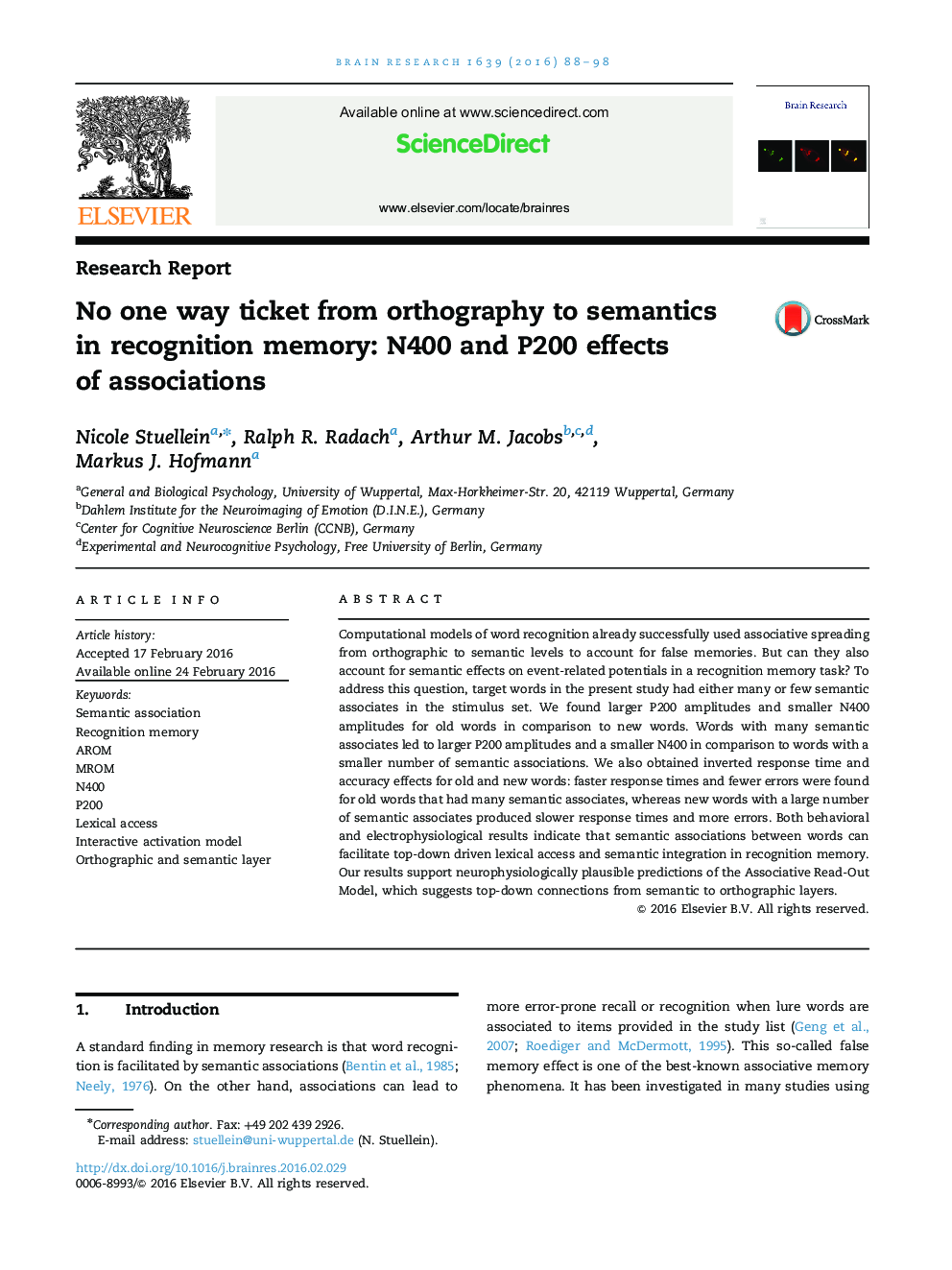| Article ID | Journal | Published Year | Pages | File Type |
|---|---|---|---|---|
| 6262576 | Brain Research | 2016 | 11 Pages |
â¢Computational models can account for semantic effects on ERPs in recognition memory.â¢Semantic associations speed up lexical access and semantic integration.â¢Results indicate a top down connection from semantic to orthographic layers.
Computational models of word recognition already successfully used associative spreading from orthographic to semantic levels to account for false memories. But can they also account for semantic effects on event-related potentials in a recognition memory task? To address this question, target words in the present study had either many or few semantic associates in the stimulus set. We found larger P200 amplitudes and smaller N400 amplitudes for old words in comparison to new words. Words with many semantic associates led to larger P200 amplitudes and a smaller N400 in comparison to words with a smaller number of semantic associations. We also obtained inverted response time and accuracy effects for old and new words: faster response times and fewer errors were found for old words that had many semantic associates, whereas new words with a large number of semantic associates produced slower response times and more errors. Both behavioral and electrophysiological results indicate that semantic associations between words can facilitate top-down driven lexical access and semantic integration in recognition memory. Our results support neurophysiologically plausible predictions of the Associative Read-Out Model, which suggests top-down connections from semantic to orthographic layers.
